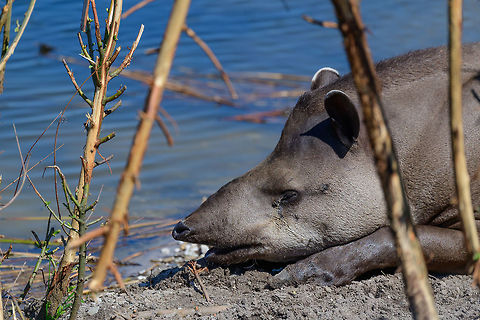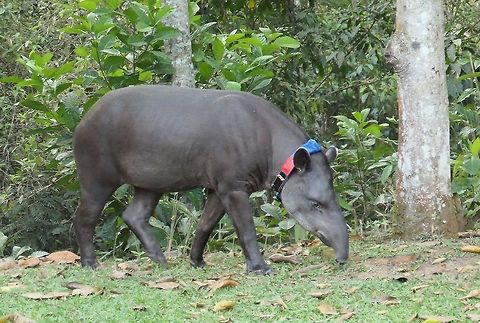
Appearance
It is dark brown in colour, paler in the face, and has a low, erect crest running from the crown down the back of the neck. The round, dark ears have distinctive white edges. The South American tapir can attain a body length of 1.8 to 2.5 m with a 5 to 10 cm short stubby tail and an average weight around 225 kg. Adult weight has been reportedly ranged from 150 to 320 kg. It stands somewhere between 77 to 108 cm at the shoulder.
Status
Dwindling numbers are due to poaching for meat and hide, as well as habitat destruction.The South American tapir is generally recognized as an endangered animal species, with the species being designated as endangered by the United States Fish and Wildlife Service on June 2, 1970. It has a significantly lower risk of extinction, though, than the other three tapir species.

Behavior
Lowland tapirs are excellent swimmers and divers, but also move quickly on land, even over rugged, mountainous terrain. They have a life span of approximately 25 to 30 years. In the wild, their main predators are crocodilians and large cats such as the jaguar and cougar, which often attack tapirs at night when they leave the water and sleep on the riverbank. Brazilian tapirs are also attacked by green anacondas. They are known to run to water when scared to take cover.
Food
It is an herbivore. Using its mobile snout, this tapir feeds on leaves, buds, shoots, and small branches it tears from trees, fruit, grasses, and aquatic plants.References:
Some text fragments are auto parsed from Wikipedia.